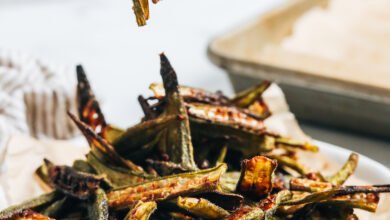

Why It Works
- Making the soup base with both chicken bones and meat gives it a robust body and flavor.
- Bruising the fresh lemongrass with the blunt side of a knife and crushing the makrut lime leaves between your hands helps release their fragrant essential oils.
- Whole coriander seeds and white peppercorns bring a floral and pleasantly pungent aroma to the dish.
My Indonesian Chinese parents frequently prepared two kinds of soups when I was a child: There was sup, a clear beef or chicken broth that usually features floating macaroni, slices of pan-fried Spam, or thick chunks of oxtail with vegetables. The other was soto, a spice-rich soup unique to the Southeast region of Indonesia, Singapore, and Malaysia. Also referred to as “coto” or “croto” in different dialects, the soup has various components depending on the region, the cook preparing it, and what’s available. What’s included is usually based on personal preference and what’s available locally. My two favorites include soto Betawi, a Jakartan dish of beef brisket, tripe, and a thick coconut milk-based soup; and the turmeric- and coriander-inflected soto ayam Madura (chicken soto from Madura, an island off Java’s northeastern coast) that’s typically served with mung bean threads and shredded chicken.
Serious Eats / Shri Repp
While both sup and soto are popular across the Indonesian archipelago, sup is largely the product of Dutch colonization; the dish contains many ingredients the Dutch introduced to Indonesia, including vegetables like potatoes and cabbage. Soto, on the other hand, tastes much more intrinsically Indonesian with its traditional ingredients such as lemongrass and lime leaves. Depending on who you ask, soto’s provenance varies. However, it is safe to say that different communities adapted it to incorporate their own cooking traditions and ingredients. For example: Because a majority of Indonesians do not consume pork, soto babi (pork soto) is only widely eaten in Bali, where the predominantly Hindu population does not follow the Muslim halal law. (87 percent of the Indonesian population identifies as Muslim, according to Pew Research citing data released by the Ministry of Religious Affairs in 2022.)
The recipe below is inspired by the one my mum often made for my family when I was a child. I can still remember her grinding white peppercorns and coriander seeds—among other herbs and spices—in her mortar, with turmeric staining her hands and the warm ginger notes permeating our home. Watching my mum toil away through her recipe and its long list of ingredients, I always assumed making soto ayam was complicated. The first time I made my mum’s recipe, I was shocked to discover that the classic Indonesian dish comes together in just an hour—though you can shave off even more time by starting with leftover chicken and store-bought stock.
Making a Flavorful Soup Base for Soto Ayam
When making the soup base, I use both chicken bones and meat: The collagen from the bones gives the soup body, while the meat brings rich chicken flavor. Though you can use whatever bones or cuts of chicken you have on hand, my recipe below calls for bone-in, skin-on chicken thighs. The cut is more forgiving than chicken breast, which can easily overcook, and has plenty of meat for shredding into the soup to enjoy with the noodles.
Serious Eats / Shri Repp
How to Make the Spice Paste for Soto Ayam
As I touched on in my Indonesian white spice paste recipe, spice pastes are the foundation of many Indonesian recipes. The pastes typically consist of garlic, shallots, candlenuts or macadamia nuts, coriander seeds, and other aromatics like makrut lime leaves and lemongrass, though ingredients may vary depending on what the spice paste will be used in. The red bumbu dasar merah that’s used in beef rendang, for example, will have spicy red chiles. The yellow bumbu dasar kuning I use to make soto ayam gets its warm, earthy flavor from fresh ginger and ground turmeric, along with a floral note from white peppercorns and creaminess from candlenuts. (Candlenuts, a staple of Indonesian cooking, can be easily found online or at Southeast Asian grocery stores, but you can substitute macadamia nuts if necessary.) I recommend using whole spices and grinding them fresh in a small mortar and pestle or spice grinder for a more pronounced and fragrant flavor.
Serious Eats / Shri Repp
The Best Noodles for Soto Ayam
The soup is traditionally served with mung bean threads—glass noodles that have a pleasantly chewy texture—and that’s what my recipe below calls for. If you can’t get your hands on mung bean noodles, though, rice vermicelli is also a good option. You can also eat soto ayam with white rice or lontong (compressed rice cakes), which is something I do from time to time.
Serious Eats / Shri Repp
How to Assemble Soto Ayam
Once the soup is done, all that’s left is to assemble the noodle bowls. Layer the noodles, vegetables, chicken, and egg slices in individual bowls, then carefully pour the piping hot soup over. Garnish with bean sprouts, green onion, celery leaves, and crisp shallots. My favorite, however, is the traditional topping of crushed potato chips, which add a pleasant crunch. You can serve soto ayam as a one-dish meal or as part of a multi-course family-style meal, and with or without rice. Just don’t forget the kecap manis, sambal oelek, and limes, which bring everything together and complete the meal.
Source link



